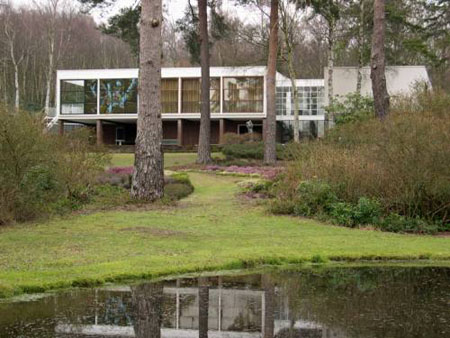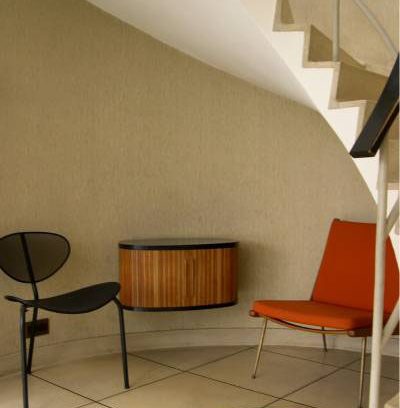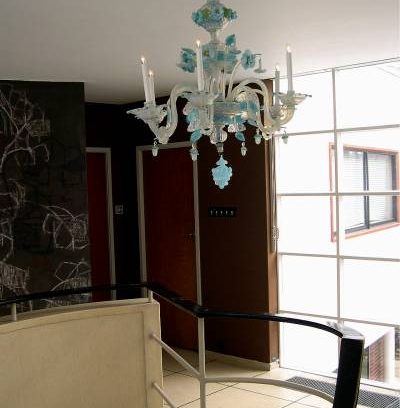This website uses cookies
This website uses cookies to enable it to function properly and to analyse how the website is used. Please click 'Close' to accept and continue using the website.






March 2004 - The Homewood
Giving a lecture recently on The National Trust’s opening of 2 Willow Road, Erno Goldfinger’s Hampstead home, I was asked why the Trust should have acquired a modern building that did not present canonical Modernism. March 26 of this year sees the opening of Patrick Gwynne’s 1938 Esher house, The Homewood, for the National Trust; a move that will gratify the organisation’s Modern enthusiasts (very many more than one might expect). The new property will also redress the balance. If our visitors have become used to Goldfinger’s idiosyncratic take on the Modern Movement, The Homewood can offer another lesson in the history of the style. In fact, the National Trust was in negotiation with Gwynne long before we opened our doors to the public at Willow Road. That the project at The Homewood has had a longer gestation period due to a very specific Memorandum of Wishes – the details of handover and subsequent management – has meant that the Trust has not, as my questioner inferred, presented a simply linear architectural history.
By necessity, the story of the Modern Movement in Britain, as told by the National Trust at least, has been slightly subverted. The classical Modernism of The Homewood will be introduced to the public after it has already become acclimatised to Goldfinger’s less straightforward rendering of the style. But this is no bad thing. At the same lecture another questioner asked how the Trust felt about running properties whose income generating capacities fall far short of the Chartwells or Fountains Abbeys of the portfolio. It is an encouraging measure of the organisation’s continuing academic concerns in these days of targets and marketing that the National Trust recognises the ‘cultural capital’ of owning buildings like The Homewood and Willow Road. And our visitors will surely be receptive to an acquisition that complicates, rather than simplifies the Modern story being told by these two houses.
So what are the differences between the buildings? Whilst accepting modernism in terms of its classical proportion, rigorous rationalism and efficient use of space, Willow Road also represents a divergence from the purity of Corbusian ‘’ architecture, to use Goldfinger’s phrase. By contrast, The Homewood adheres far more closely to the established aesthetic of continental Modernism.
Born in 1913, Gwynne trained in Wells Coates’ office and, at 24, was working on the design of The Homewood just as Coates was leaving the practice. Having received a grounding in the ‘heroic’ Modernism of the inter-war years via Coates, Gwynne’s design also bears witness to his having travelled on the continent – he had visited the Weissenhof Siedlung – and was principally influenced by Le Corbusier’s Villa Savoie. Technically, too, The Homewood owes Coates a debt in that he had introduced Gwynne to building contractors adept at working with a reinforced concrete frame.
Situated at the top of the gently sloping hill that forms part of the house’s generous grounds, The Homewood ‘s pilotis allow it to float beautifully over its surroundings. From within, Gwynne’s concern to integrate interior with outdoors is further enhanced by his careful consideration of the site’s landscaping. The Homewood’s reinforced concrete structure also allows for wide, open space inside the house. The particularly dramatic sitting room offers a great expanse of uninterrupted window wall. Accommodation is all on the first floor and so rooms look down onto and over the gardens that meant as much to Gwynne as the house.
Although suburban, The Homewood offers a rural sensibility accentuated by its social planning, unlike the entirely urban Willow Road. Whereas Willow Road refers to eighteenth-century town planning, The Homewood inherits – how appropriately to the National Trust – something of the English country house. Gwynne’s design employs two wings at right angles to each other. One was intended as bedroom and dressing room space and one as living, staff and service-room space.
The social aspects of The Homewood also reconfigure life in the country manor. Originally conceived for his parents, the house certainly was not built to a restrictive budget. Gwynne’s careful choice of material, eye for finishes (terrazzo, marble and gold leaf all feature) created a lavish aesthetic. Combined with sundeck, swimming pool and sprung sitting room flooring for dancing, these touches might have pushed opulence towards showiness. A love of luxury and novelty might have run riot at the hands of a lesser modernist but Gwynne’s detailing of The Homewood was to remain contained by an equally strongly felt concern for a stylishness too polite to tolerate the meretriciously flashy.
Unmistakably though, The Homewood was a house in which its creator intended to have fun. Sadly Gwynne’s parents were only to occupy the building for a year but the architect continued to live there until his death in May of last year. If the National Trust at Willow Road has introduced the wider British public to a more sombre Modernism, The Homewood tells another tale. Just as its design was not all rigidity and earnestness, neither was the Modern Movement all neat linearity. The Homewood will tell another story to that presented in Hampstead. Visitors have responded extremely positively to Willow Road – ‘more modern houses please’ is often the request in the visitors’ book. Whilst Goldfinger’s aesthetic has not always been to everyone’s taste, his careful design and detailing have been consistently applauded. I predict a huge success for the National Trust in its opening of the lighter-hearted sophistication of The Homewood . And whilst, like Willow Road, it won’t have a tearoom or gift shop, it will have gardens.
www.nationaltrust.org.uk/homewood
Look for past Buildings of the Month by entering the name of an individual building or architect or browsing the drop down list.

Become a C20 member today and help save our modern design heritage.